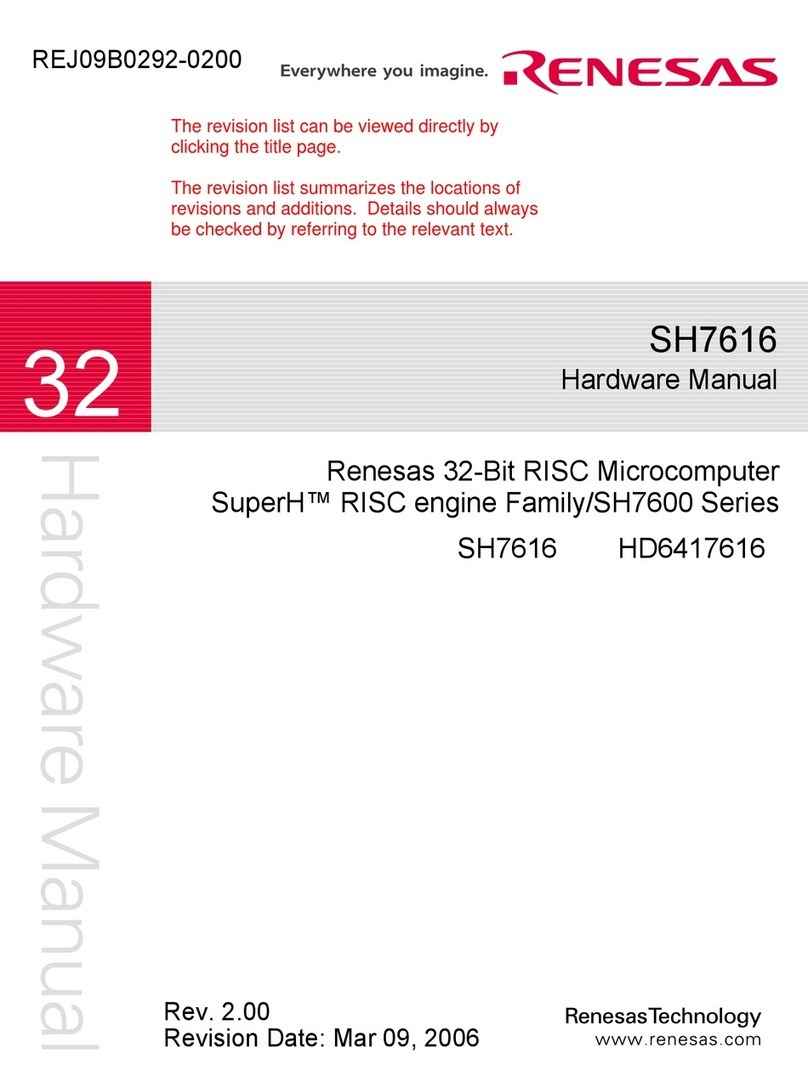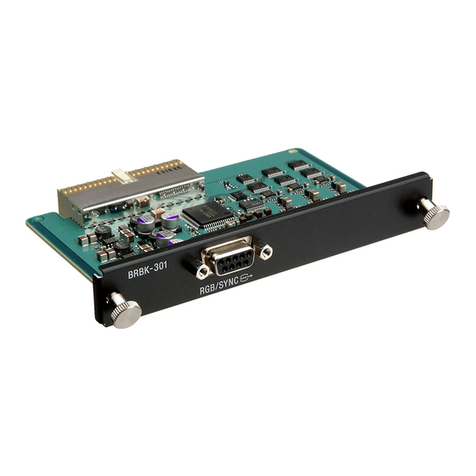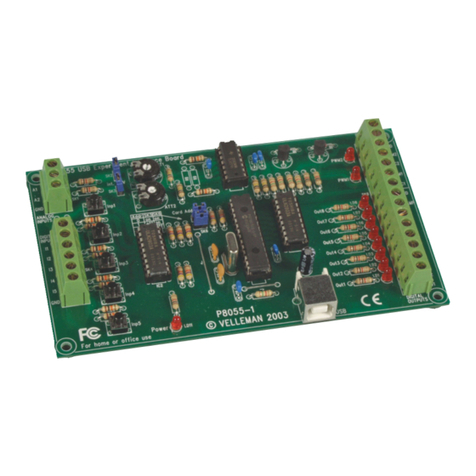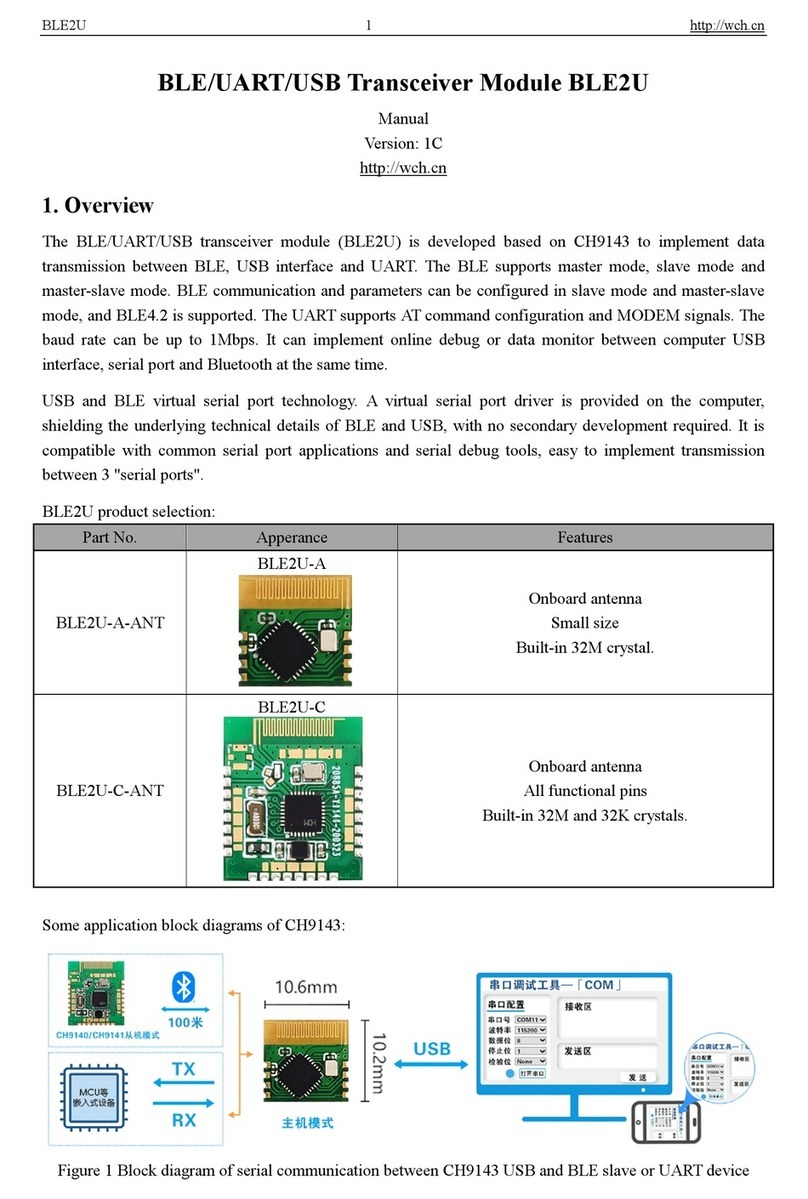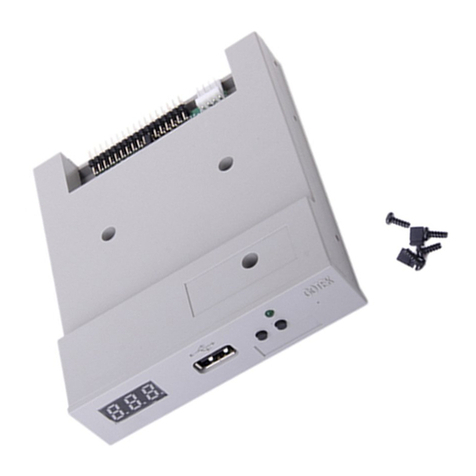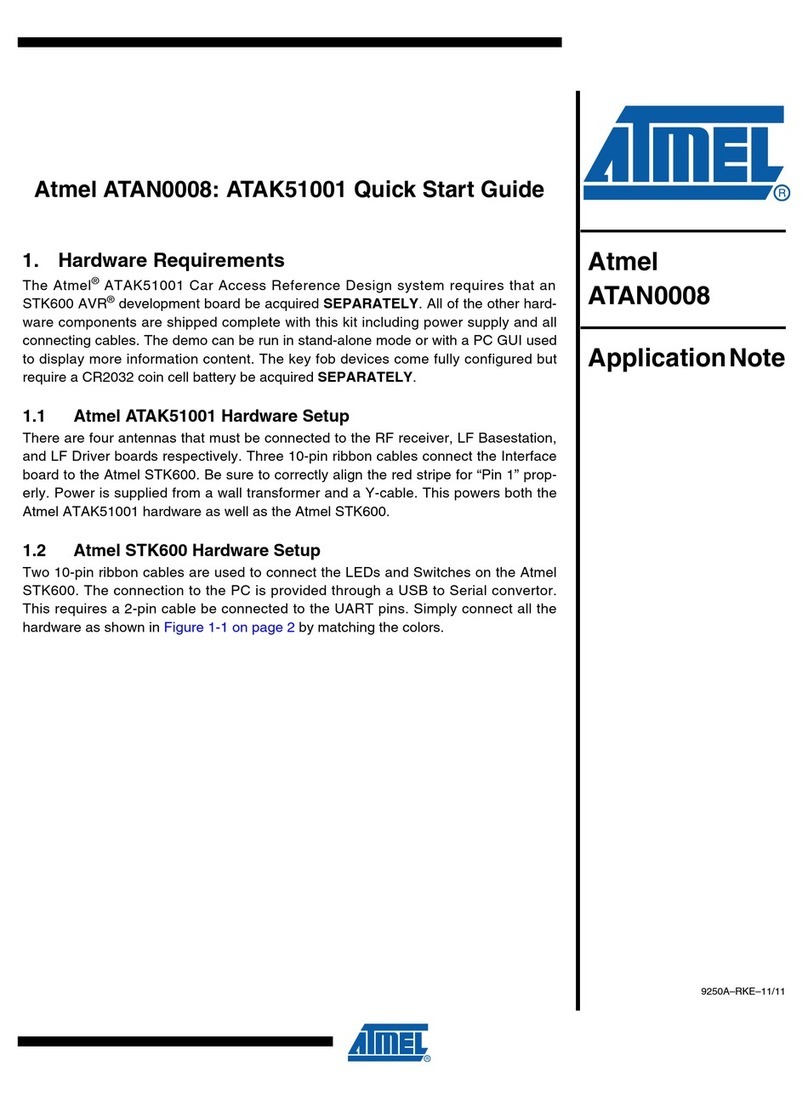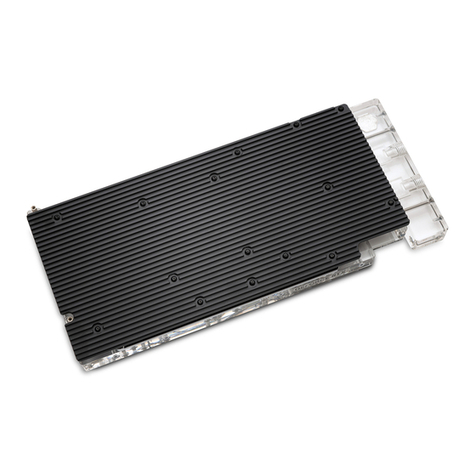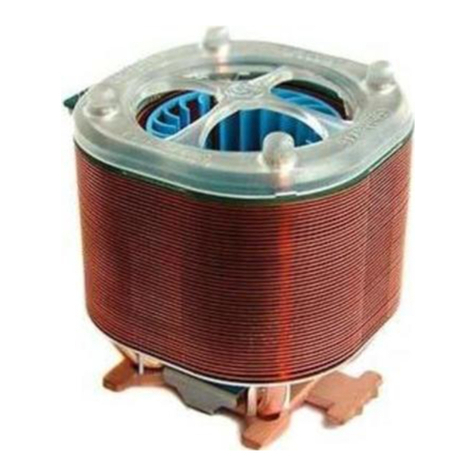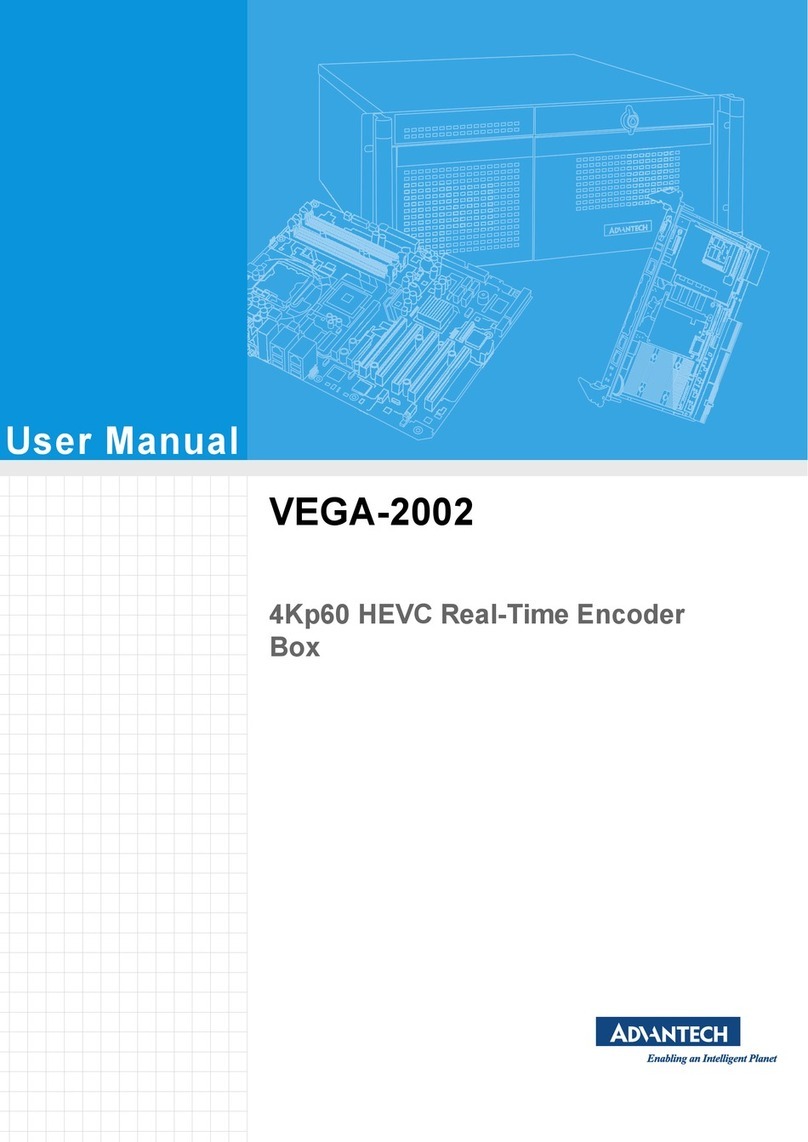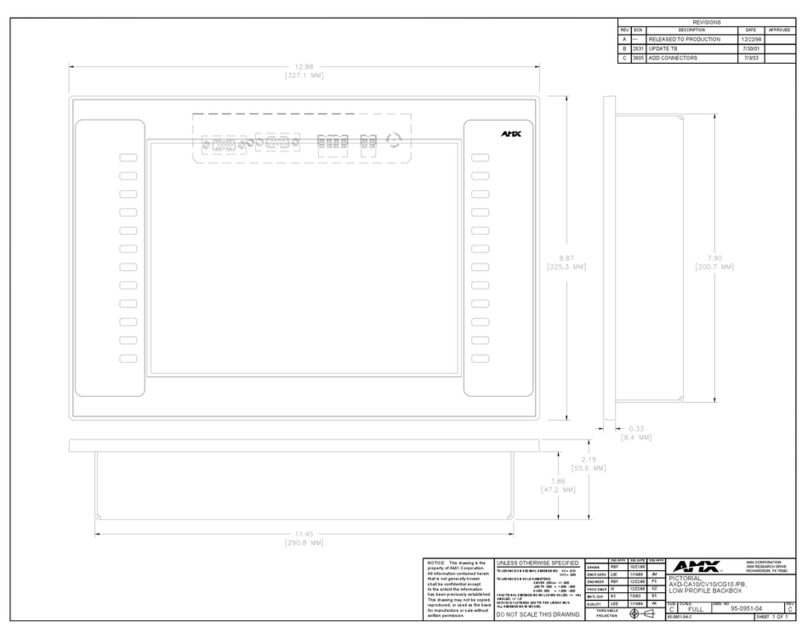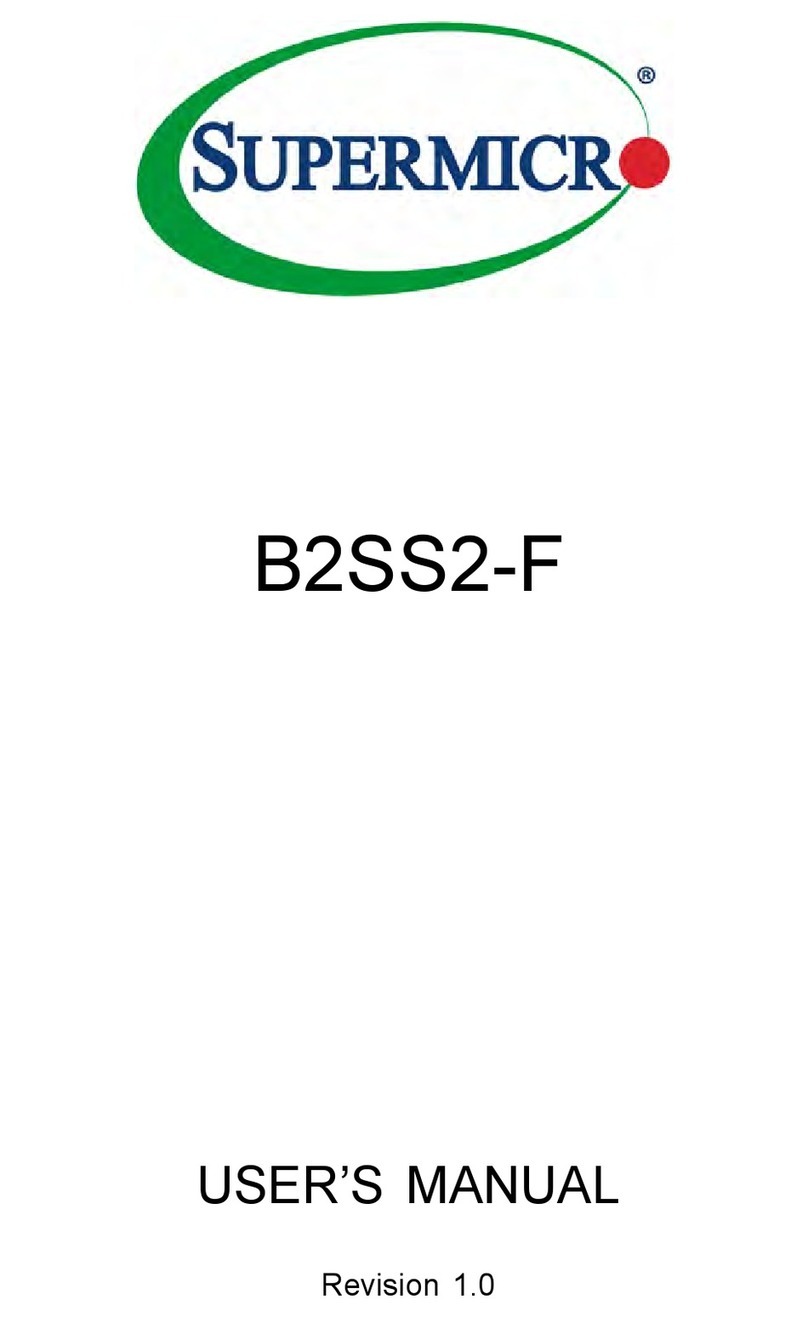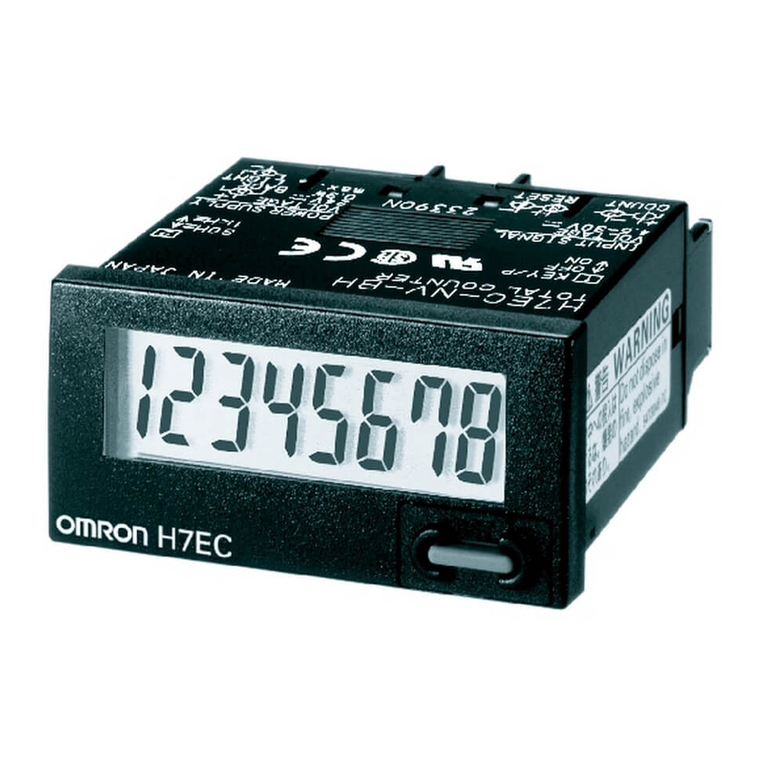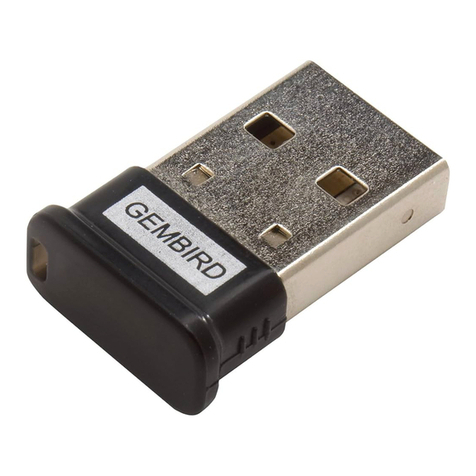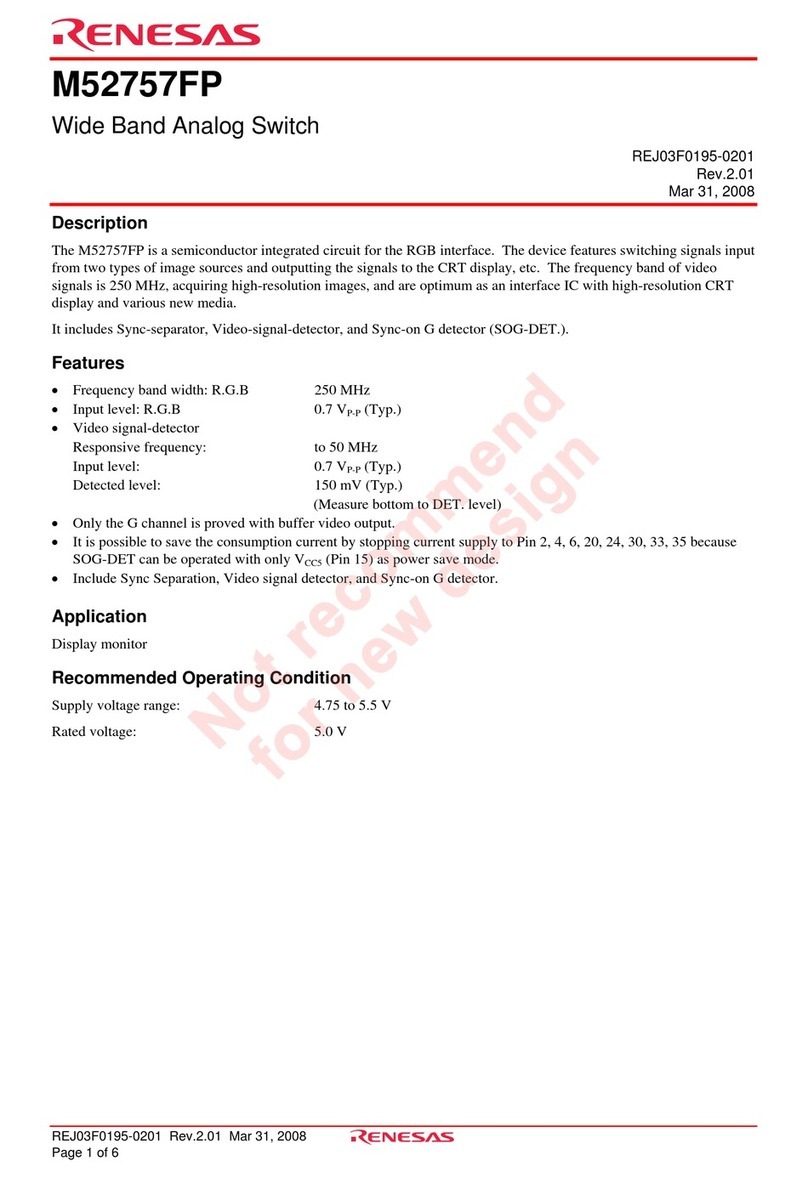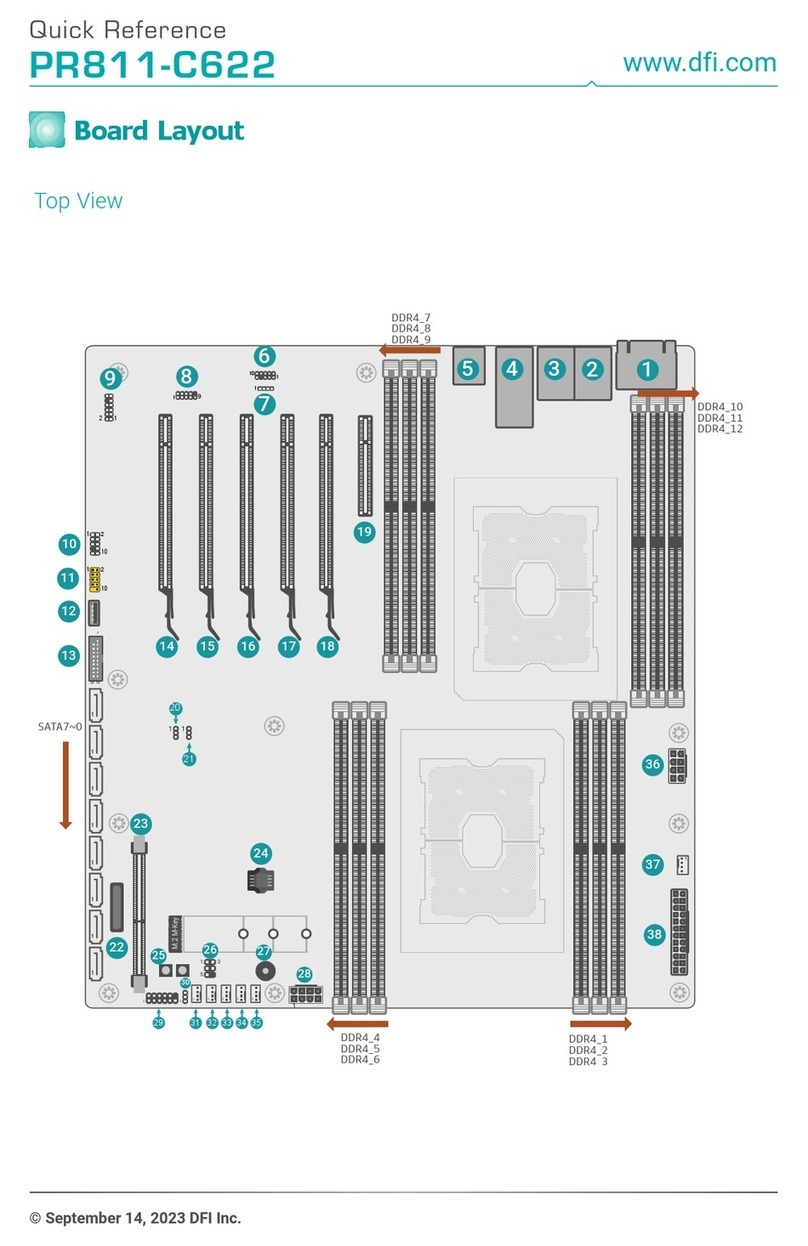Memtech SC3500 User manual

SC3500
3.5” Solid State SCSI Drive
User Guide
80-03-00032
Revision 1.3
March 8, 2005
Memtech SSD Corporation
7628 Las Positas Road
Livermore, CA 94551
(800)445-5511
www.memtech.com

SC3500 User Guide Ver 1.3 March 8, 2005 Page 2 of 28
Table Of Contents
1. HIGHLIGHTS .....................................................................3
2. INTRODUCTION................................................................3
3. GENERAL DESCRIPTION.................................................4
3.1 SCSI Interface..............................................................................4
3.2 SCSI Connector...........................................................................5
3.3 SCSI Commands .........................................................................7
4. GENERAL SPECIFICATIONS .........................................19
5. JUMPER CONFIGURATION............................................20
5.1 Jumper and Switch Locations....................................................20
5.2 SCSI ID Selection ......................................................................21
5.3 Write Protection .........................................................................21
5.4 Termination................................................................................21
5.5 Termination Power.....................................................................22
5.6 Parity..........................................................................................22
5.7 Remote LED...............................................................................22
5.8 Reserved locations.....................................................................22
5.9 Memory Size..............................................................................22
6. INSTALLATION ...............................................................23
6.1 Default Configuration .................................................................23
6.2 Hardware Installation Procedure................................................23
6.3 Power and Cable Attachments...................................................24
6.4 Software Installation Procedure.................................................24
7. MECHANICAL DRAWINGS..............................................25
8. TROUBLE SHOOTING GUIDE........................................27
8.1 Error Blink Codes -.....................................................................27
8.2 Warning Blink Codes –...............................................................27
8.3 Red LED on steady at power-up-...............................................27
8.4 Unit does not respond to SCSI commands -..............................27
9. APPENDIX.......................................................................28
9.1 Contact Information....................................................................28
9.2 SCSI specification information...................................................28
9.3 Limited Lifetime Warranty..........................................................28

SC3500 User Guide Ver 1.3 March 8, 2005 Page 3 of 28
1. HIGHLIGHTS
• 36864 Mbyte uncompressed capacity
• Full -40oC to +85oC operating temp range
• Active Remap™ Technology with ECC
• Unmatched SCSI-II compatibility
• On-board active termination
• 5 volt, low power operation
• Completely solid state - no moving parts
• 500G operating shock
• 10G operating vibration
• Rugged, 3.5” half height drive form factor
• Single-ended 50-pin shrouded SCSI interface
• 0.7 millisecond random access time
• 2.3 Mbyte/sec sustained Read throughput
• 1.0 Mbyte/sec sustained Write throughput
• 10 year guaranteed data integrity
• NO installable device drivers
2. INTRODUCTION
The SC3500 series is a line of 100% compatible SCSI-II solid state drives in a 3.5-
inch half-height format. It is completely solid state, with no moving parts. This
accounts for the unit’s exceptional ruggedness and wide operating temperature
range.
Sector Erasable NAND E2PROM (Flash) are used to provide up to 36864 Mbytes of
nonvolatile, solid state storage in an extremely small, rugged form factor. The drive
is 100% SCSI-2 compatible direct access device and requires no special drivers to
operate. It is essentially a drop in replacement for standard rotating media.
The SC3500 can be used in applications where operating conditions are harsh and
when reliability is critical. A 100% CMOS logic design minimizes power
consumption, and the +5 volt only power requirement simplifies system supply
needs. An on-board microprocessor implements all control functions, and oversees
SCSI communications via a Qlogic FAS209 SCSI-II processor. The microprocessor
performs all power up diagnostics, data transfers, and error handling in the unit. The
SC3500 can sustain a 2.3 Mbyte per second read throughput and 1.0 Mbyte per
second write throughput. The unit responds to all Direct-Access device commands,
uses a single-ended, unitized 50-pin interface and as with all single-ended SCSI
devices, the SC3500 may be placed up to 18 feet (6 m) from the host SCSI
controller. Data integrity is maintained using Memtech’s proprietary Active Remap™
technology.
The drive is available in capacities ranging from 128 Mbytes to 36864 Mbytes.
Please contact the factory with your requirements. Every drive is fully tested under
environmental extremes using Memtech’s Enduro Test, which guarantees data
integrity under even the harshest conditions.

SC3500 User Guide Ver 1.3 March 8, 2005 Page 4 of 28
3. GENERAL DESCRIPTION
3.1 SCSI Interface
An intelligent SCSI controller from Qlogic, the FAS209, handles the SCSI interface
for the SC3500. The FAS209 is SCSI-I and SCSI II compliant, and automates much
of the interface overhead. It has a 16 byte FIFO, a DMA interface, and numerous
command and control registers.
The SC3500 employs the following attributes:
1. Single-ended drivers
2. Termination power derived from cable or drive
3. Selectable parity on the interface
4. "Hard" RESET implemented
5. Reservation queuing
The SC3500 has implemented all mandatory SCSI-I and SCSI- II commands and
several optional commands to enhance functionality. The following is a list of
commands and their equivalent hexadecimal representation.
1. Test Unit Ready 00h M
2. Rezero Unit 01h O
3. Request Sense 03h M
4. Format Unit 04h M
5. Read 08h M
6. Write 0Ah O
7. Inquiry 12h M
8. Mode Select 15h O
9. Reserve Unit 16h M
10. Release Unit 17h M
11. Mode Sense 1Ah O
12. Receive Diagnostics 1Ch O
13. Send Diagnostics 1Dh M
14. Read Capacity 25h M
15. Extended Read 28h M
16. Extended Write 2Ah O
17. Erase 2Ch O
18. Write & Verify 2Eh O
19. Verify 2Fh O
20. Read Defect 27h O
21. Write Buffer 3Bh O
22. Read Buffer 3Ch O
23. Change Definition 40h O

SC3500 User Guide Ver 1.3 March 8, 2005 Page 5 of 28
The implemented messages on the SC3500 are as follows:
1. Command Complete 00h Generated
2. Extended Message 01h Both
3. Init Detected Error 05h Received
4. Abort 06h Received
5. Message Reject 07h Generated
6. NoOp Message 08h Received
7. Message Parity Error 09h Received
8. Bus Device Reset 0Ch Received
9. Identify 80h Received
3.2 SCSI Connector
The SC3500 uses a unitized SCSI-2 connector incorporating both the 50-pin right
angle 0.1 inch center connector and the 4-pin AT power connector. Maximum cable
length is 6 meters. The diagram below depicts connector orientation and location.
3.2.1 SCSI Connector Physical Orientation
Pin #1
SC3500 – Connector View
+5V
GND
Fig. 1: SC3500 SCSI connector view

SC3500 User Guide Ver 1.3 March 8, 2005 Page 6 of 28
3.2.2 SCSi Connector Pinout
The following shows the pin connections for the SCSI connector used on the SC3500.
PIN SIGNAL PIN SIGNAL
1 GROUND 2 DB0
3 GROUND 4 DB1
5 GROUND 6 DB2
7 GROUND 8 DB3
9 GROUND 10 DB4
11 GROUND 12 DB5
13 GROUND 14 DB6
15 GROUND 16 DB7
17 GROUND 18 DBP
19 GROUND 20 GROUND
21 GROUND 22 GROUND
23 RSVD 24 RSVD
25 GROUND 26 TERMPWR
27 RSVD 28 RSVD
29 GROUND 30 GROUND
31 GROUND 32 ATN
33 GROUND 34 GROUND
35 GROUND 36 BSY
37 GROUND 38 ACK
39 GROUND 40 RST
41 GROUND 42 MSG
43 GROUND 44 SEL
45 GROUND 46 C/D
47 GROUND 48 REQ
49 GROUND 50 I/O

SC3500 User Guide Ver 1.3 March 8, 2005 Page 7 of 28
3.3 SCSI Commands
3.3.1 Test Unit Ready Command – 00h
Test Unit Ready CDB
The TEST UNIT READY command provides a means to check if the logical unit is
ready. This is not a request for a self-test. If the logical unit would accept an appropriate
medium-access command without returning CHECK CONDITION status, this command
shall return a GOOD status. If the logical unit cannot become operational or is in a state
such that an initiator action is required to make the unit ready, the target shall return
CHECK CONDITION status with a sense key of NOT READY.
3.3.2 Rezero Unit Command – 01h
Rezero Unit CDB
The REZERO UNIT command requests that the target set the logical unit to a specific
state. This is implemented on the SC3500 as a NOP command and has no effect other
than to verify the CDB.

SC3500 User Guide Ver 1.3 March 8, 2005 Page 8 of 28
3.3.3 Request Sense Command – 03h
Request Sense CDB
The REQUEST SENSE command requests that the SC3500 transfer sense data to the
initiator. If the SC3500 has no sense data available to return, it will return a sense key
of NO SENSE and an additional sense code of NO ADDITIONAL SENSE
INFORMATION. The sense data shall be preserved by the target for the initiator until
retrieved by a REQUEST SENSE command or until the receipt of any other I/O process
for the same I_T_x nexus. Sense data shall be cleared upon receipt of any subsequent
I/O process (including REQUEST SENSE) to the same I_T_x nexus.
The target shall return CHECK CONDITION status for a REQUEST SENSE command
only to report exception conditions specific to the command itself. For example:
a) A non-zero reserved bit is detected in the command descriptor block;
b) An unrecovered parity error is detected on the data bus;
c) A target malfunction prevents return of the sense data.
If a recovered error occurs during the execution of the REQUEST SENSE command,
the target shall return the sense data with GOOD status. If a target returns CHECK
CONDITION status for a REQUEST SENSE command, the sense data may be invalid.
The SC3500 is capable of returning eighteen bytes of data in response to a REQUEST
SENSE command. If the allocation length is eighteen or greater, and the SC3500
returns less than eighteen bytes of data, the initiator should assume that the bytes not
transferred would have been zeros had the target returned those bytes. Initiators can
determine how much sense data was returned by examining the allocation length
parameter in the command descriptor block and the additional sense length in the sense
data.
The sense data format for error codes 70h (current errors) and 71h (deferred errors) are
defined below. For further details on the Request Sense command, please refer to the
SCSI specification.

SC3500 User Guide Ver 1.3 March 8, 2005 Page 9 of 28
Sense data format

SC3500 User Guide Ver 1.3 March 8, 2005 Page 10 of 28
3.3.4 Format Unit Command – 04h
The FORMAT UNIT command formats the medium into initiator addressable logical
blocks per the initiator-defined options. In addition, the medium may be certified and
control structures may be created for the management of the medium and defects.
Format Unit CDB
Only the simplest and mandatory forms of the FORMAT UNIT command (with no format
data) are implemented on the SC3500. This routine accomplishes medium formatting
with little initiator control over defect management.
The FORMAT UNIT command shall be rejected with RESERVATION CONFLICT status
if the logical unit is reserved, or any extent reservation, from any initiator, is active in the
specified logical unit. During the execution of the FORMAT UNIT command, the
SC3500 may perform a medium defect management algorithm.
A FmtData bit of zero indicates that a DATA OUT phase shall not occur. The source of
defect information is not specified. This is the only form of the command the SC3500
supports.
A complete list (CmpLst) bit of one indicates that the defect list sent by the initiator is a
complete list of defects. The existing defect list is discarded by the SC3500 and a new
primary defect list is constructed. A CmpLst bit of zero indicates that the current defect
list should be maintained. As a result a new primary is constructed that contains the
existing list and any new defects the SC3500 may add during the format operation.

SC3500 User Guide Ver 1.3 March 8, 2005 Page 11 of 28
3.3.5 Read (6) Command – 08h
The READ (6) command requests that the SC3500 transfer data to the initiator. The
most recent data value written in the addressed logical block shall be returned.
Read (6) CDB
The logical block address field specifies the logical block at which the read operation
shall begin. The transfer length field specifies the number of contiguous logical blocks
of data to be transferred. A transfer length of zero indicates that 256 logical blocks shall
be transferred. Any other value indicates the number of logical blocks that shall be
transferred.
3.3.6 Write (6) Command – 0Ah
The WRITE (6) command requests that the target write the data transferred by the
initiator to the medium.
Write (6) CDB
The logical block address field specifies the logical block at which the write operation
shall begin.
The transfer length field specifies the number of contiguous logical blocks of data to
transfer. A transfer length of zero indicates that 256 logical blocks shall be transferred.
Any other value indicates the number of logical blocks that shall be transferred.

SC3500 User Guide Ver 1.3 March 8, 2005 Page 12 of 28
3.3.7 Inquiry Command – 12h
The INQUIRY command requests that information regarding parameters of the SC3500
be sent to the initiator.
Inquiry CDB
An enable vital product data (EVPD) bit of one specifies that the SC3500 return the
optional vital product data specified by the page code field. If any optional fields in the
CDB are set that the SC3500 does not support, it will return a CHECK CONDITION
status with the sense key set to ILLEGAL REQUEST and an additional sense code of
INVALID FIELD IN CDB.
An EVPD bit of zero specifies that the SC3500 return the standard INQUIRY data. If the
page code field is not zero, the target shall return CHECK CONDITION status with the
sense key set to ILLEGAL REQUEST and an additional sense code of INVALID FIELD
IN CDB. The page code field specifies which page of vital product data information the
SC3500 return.
The INQUIRY command shall return CHECK CONDITION status only when the target
cannot return the requested INQUIRY data. The INQUIRY data should be returned
even though the peripheral device may not be ready for other commands. If an
INQUIRY command is received from an initiator with a pending unit attention condition,
the SC3500 will perform the INQUIRY command and not clear the unit attention
condition.

SC3500 User Guide Ver 1.3 March 8, 2005 Page 13 of 28
Standard Inquiry Data Format
Please refer to the SCSI specification for further details on the vital product data pages
and formats.

SC3500 User Guide Ver 1.3 March 8, 2005 Page 14 of 28
3.3.8 Reserve Unit – 16h
The RESERVE command is used to reserve a logical unit or, if the extent reservation
option is implemented, extents within a logical unit.
Reserve CDB
3.3.9 Release Unit – 17h
The RELEASE command is used to release a previously reserved logical unit, or, if the
extent release option is implemented, to release previously reserved extents within a
logical unit.
Release CDB

SC3500 User Guide Ver 1.3 March 8, 2005 Page 15 of 28
3.3.10 Mode Sense
The MODE SENSE (6) command provides a means for a target to report parameters to
the initiator. It is a complementary command to the MODE SELECT (6) command.
Mode Sense CDB
A disable block descriptors (DBD) bit of zero indicates that the target may return zero or
more block descriptors in the returned MODE SENSE data, at the target’s discretion. A
DBD bit of one specifies that the target shall not return any block descriptors in the
returned MODE SENSE data. The page control (PC) field defines the type of mode
parameter values to be returned in the mode pages. The page code specifies which
mode page to return.

SC3500 User Guide Ver 1.3 March 8, 2005 Page 16 of 28
3.3.11 Send Diagnostics – 1Dh
The SEND DIAGNOSTIC command requests that the SC3500 perform diagnostic
operations on itself. The only mandatory implementation of this command is the self-test
feature with the parameter list length of zero.
Send Diagnostics CDB
3.3.12 Read Capacity – 25h
The READ CAPACITY command provides a means for the initiator to request
information regarding the capacity of the logical unit.
Read Capacity CDB

SC3500 User Guide Ver 1.3 March 8, 2005 Page 17 of 28
3.3.13 Extended Read (10) – 28h
The READ (10) command requests that the target transfer data to the initiator. The most
recent data value written in the addressed logical block is returned.
Read (10) CDB
3.3.14 Extended Write (10)
The WRITE (10) command requests that the SC3500 write the data transferred by the
initiator to the medium.
Write (10) CDB

SC3500 User Guide Ver 1.3 March 8, 2005 Page 18 of 28
3.3.15 Erase Command
Erase CDB
The ERASE (10) command requests that the target erase the specified number of
blocks starting at the specified logical block address on the medium. As used here,
erased means the medium shall be erased. The previous data recorded on the
medium, if any, shall not be recoverable. The Remap Tableis retained, thus allowing
write and read access to the memory.
The erase all (ERA) bit set to one indicates that all blocks on the medium shall be
erased. If the ERA bit is set to one and if the number of blocks is not zero, the SC3500
will return CHECK CONDITION, and the sense key shall be set to ILLEGAL REQUEST,
with an additional sense code of INVALID FIELD IN CDB. If the ERA bit is zero a
transfer length of zero indicates that no blocks shall be erased. This condition is not
considered an error and no data is erased. Any other value indicates the number of
logical blocks that shall be erased.
A note about the Erase Command –
The erase command has been implemented as a security erase mechanism on the
SC3500. The command was originally created and used by tape backup devices.
When executed with ERA set, a 1 Gbyte drive can be wiped clean in about 10 seconds.
All storage locations on the drive are erased, including both user and system
(protected) data areas. At the conclusion of the erase command, the existing Remap
Table™ is restored to memory.

SC3500 User Guide Ver 1.3 March 8, 2005 Page 19 of 28
4. GENERAL SPECIFICATIONS
Interface
SCSI Compatibility ANSI X3.131-1994
SCSI Device Type 0 - Direct Access Device
Maximum Capacity 36864 Mbytes
Bytes/Block 512
Bus Width 8 bits
Termination Active – on board
Data Transfer Specifications
Bus width 1 byte (8 bits)
Synchronous Transfer Rate 10 Mbyte/sec
Media Transfer Rate 8 Mbyte/sec
Read Transfer Rate 2.3 Mbyte/sec., sustained
Write Transfer Rate 1.0 Mbyte/sec sustained
Data Access time 0.7 msec
Environmental Requirements
Operating Ambient Temperature
Commercial 0oC to +70oC
Extended -20oC to +75oC
Industrial -40oC to +85oC
Storage Temperature -55oC to +125oC Ambient
Humidity 5% to 95% non-condensing
Airflow Requirements none
Ceiling no limit
Mechanical (Full Capacity)
Length 146mm (5.75 in.)
Width 102mm (4.00 in.)
Min Height 16.0mm (0.63 in.)
Drive Form Factor 3.5" low profile drive
Mounting Considerations None (any orientation)
Max Weight 18.5 ounces (525 grams)
Power Requirements
Vcc Supply +5 volts +/- 5%
Vdd Supply +12 volts not used
Power Idle 0.50 watts
Power Active 0.90 watts
Power Max 1.10 watts

SC3500 User Guide Ver 1.3 March 8, 2005 Page 20 of 28
5. JUMPER CONFIGURATION
5.1 Jumper and Switch Locations
The following diagrams show the unit and the relative jumper and switch locations.
SCSI2
SCSI1
SCSI0
Write Protect
Termination
Reserved
Parity
LED-
LED+
GND
A
CT LED
Figure 2: SC3500 Front view
Fig 3: SC3500 Bottom View
Table of contents
